Broiler cage manufacturers tell how to disinfect chickens
For major chicken farmers who use Fully automatic poultry farming equipment for chicken, the disinfection of chickens is an indispensable part of the breeding process. Reasonable disinfection can reduce the prevalence of chickens and strengthen the environmental sanitation of the chicken coop. How to disinfect chickens? , What are the steps of disinfection? Broiler cage manufacturer Dajia Machinery summarized the key steps of disinfection of chickens, and now I will share them with farmers.
Cleaning the chicken house: Before disinfection, in order to achieve a better disinfection effect, farmers need to clean the chicken house first, because cleaning can clean the dust, feces, residual feed and other dirt on the surface of the chicken house. It can kill the dirt and bacterial pathogenic microorganisms in the deeper part of the chicken house during disinfection, and achieve a better disinfection effect.
The second step of disinfection is to wash the chicken house: For farmers who disinfect the empty chicken house, they should also pay attention to washing the chicken house after cleaning the chicken house. This is to clean the chicken house thoroughly and use the disinfectant solution. To play a good effect, thoroughly scrubbing the chicken house can ensure the effectiveness of the disinfectant. Therefore, after the dirt on the ground is soaked and softened in water, it should be scrubbed with a hard brush. It is better to use a power spray pump to scrub it at high pressure.
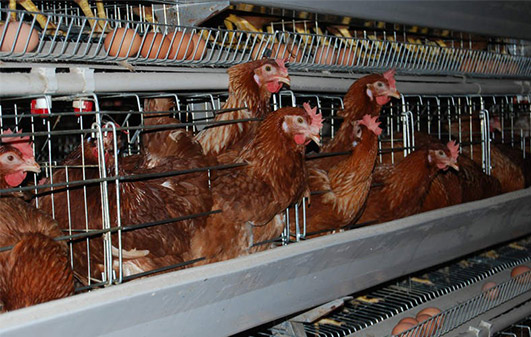
The third step of disinfection is to wait for the chicken house to dry: if the chicken house of the farmer is washed, it cannot be disinfected immediately. You need to put the chicken house aside for a few days and wait for it to be disinfected after drying. Otherwise, disinfect with water. Who will dilute it and fail to achieve a good disinfection effect.
The fourth step of disinfection is to prepare disinfectant drugs: there are many methods of disinfection. After the farmers choose the disinfection method, they must prepare the disinfectant drugs according to the proportions in the disinfectant instructions.
The fifth step of disinfection: disinfection: After the above work is completed, the farmers will start disinfection. When disinfecting, pay attention to the comprehensiveness of disinfection, and cover all corners of the chicken house, such as the roof, ceiling, walls, and fixings. Facilities, grounds, etc. must be properly disinfected so that better results can be achieved. Be careful not to miss the blocked parts.
The above is the steps of how to disinfect chicken raised by broiler cage manufacturers for farmers. I hope that the above description can bring some help to farmers.
How to use cage to raise the survival rate of chickens?
In the current chicken industry, the chicken raising method has been greatly improved and changed compared with the past. The use of various types of poultry farming equipment for large-scale farming is a popular trend in the chicken industry, so many farmers are gradually transforming. The new farming method is a novice for each farmer, so what are the precautions for novice chickens, and what are the key points for large-scale farming?
1. Large-scale chicken raising should choose poultry breeding equipment: To achieve a large-scale farming model, automated poultry farming equipment is an indispensable foundation. There are many types of chicken equipment, and the work and functions that different types can accomplish are different. Therefore, farmers need to choose the chicken equipment that suits their needs according to their own needs and conditions. Generally, the necessary chicken equipment is: egg chicken cage, meat chicken cage, drinking water equipment, ventilation and cooling equipment, cleaning equipment, feeding equipment and other chicken raising equipment.
2. Master the use of each type of equipment: Most poultry farming equipment is a mechanized equipment that requires skilled operation to achieve better results and efficiency. Therefore, when choosing to purchase equipment, farmers must learn from the manufacturer and understand the use of each poultry farming equipment and the role of the operating buttons. In addition, the life of chicken equipment is very long. In order to ensure efficiency, farmers should pay attention to the maintenance methods of learning equipment, and regularly maintain and repair chicken equipment to ensure normal use.
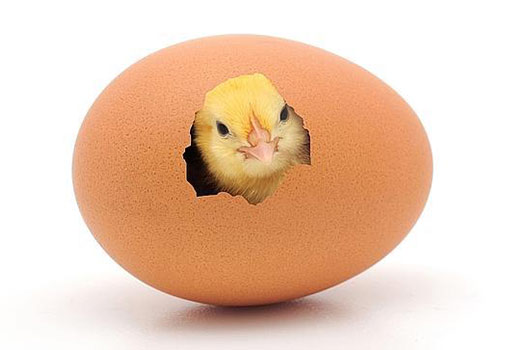
3. To do a good job in chicken farm immunization: immunization should pay attention to Newcastle disease, flu, and spread the disease, and blastocyst is more suitable for hatchery immunization. The immune effect is more reliable with eyedrops, nasal drops, subcutaneous injections, and sprays. There are still many immune holes and problems in drinking water, but many chicken farms are just accustomed to drinking water immunity, which is easy to save.
4. Configure the feed according to the nutrition standard: Only the chickens can reach the standard feed nutrition to ensure the normal growth and survival rate of the chickens. Therefore, farmers should choose reasonable feed ingredients according to the nutritional needs of different stages of the chicken, and pay attention to the quality of the feed. Feed ingredients require fresh and mold-free, pay attention to the storage of feed.
5. Do a good job of ventilation in chicken houses and chicken cages: ammonia gas, carbon dioxide and other harmful gases in the chicken house will seriously affect the health of the chickens and reduce the survival rate of the chickens. Reasonable and effective ventilation can remove the harmful gases from the house and remove the fresh air from the house. Therefore, the ventilation of the house is very important. Especially when feeding in winter, farmers should not think about heat preservation, not only to prevent cold insulation, but also to pay attention to ventilation.
The above is what the poultry farming equipment that the author needs to prepare for the intensive chicken raising for the majority of farmers. These equipments are relatively common and commonly used, which can effectively help the farmers to improve the efficiency of raising chickens and reduce the manpower of raising chickens. Material resources are very popular among farmers.
How to control the indoor temperature of layer breeding equipment?
Everyone’s daily diet is inseparable from eggs, so do you know about laying hen breeding equipment? The laying hens are made up of laying hen breeding equipment, which is the living place of the laying hens. The Automatic chicken layer breeding equipment provides a great and superior living environment for the breeding laying hens. How can we control the temperature in the hen house when using the laying hen breeding equipment? What?
When breeding laying hens, we must ensure that the laying hen breeding equipment is at a suitable temperature and humidity, because the proper temperature in the chicken cage has a great influence on the laying hens, and avoid affecting the normal growth of the laying hens due to inappropriate temperature
Generally speaking, the temperature in layer breeding equipment is better to be controlled at 23 degrees. It should not be too high or too low. Especially in winter, the layer breeding equipment must be kept warm. In the case of relatively low temperature, heating or To reduce ventilation, in summer, you can install an exhaust fan, etc. to control the temperature in the layer breeding equipment.
Controlling the indoor temperature of the layer battery cage equipment has a great relationship with the growth of the laying hens. The indoor temperature requirements of the laying hens according to different seasons and different environments are also very important. If we want our laying hens to grow better, we must pay attention to these details. Everyone must keep in mind, if you want to know more about the details of laying hen breeding equipment, you can continue to pay attention to Livi Machinery
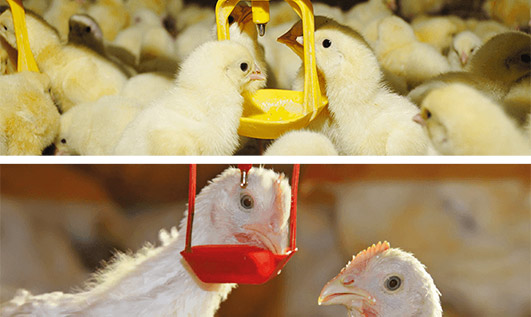
The main reason for the sudden drop in laying rate of laying hens?
Under normal feeding and management conditions, laying hens have certain regularity in laying eggs. After the eggs are seen, the egg production rate rises rapidly; within 3 to 4 weeks after the egg production rate reaches 50%, it enters the peak egg production; after a certain period of time, it slowly decreases. In actual production, often due to various factors such as improper feeding, disease infection, etc., the egg production of chicken flocks suddenly drops, causing greater economic losses.chicken poultry farming equipment manufacturers will tell you why
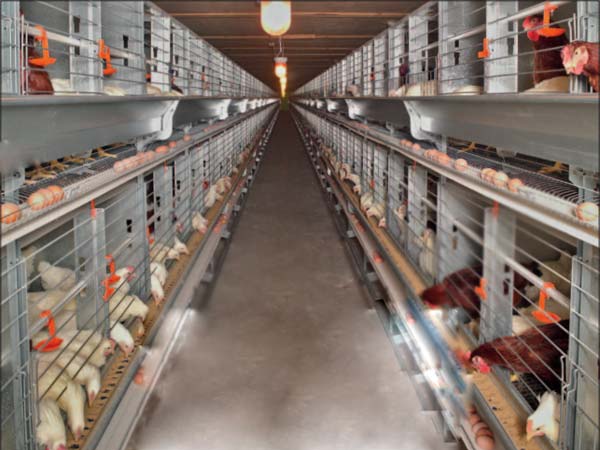
Laying hens have higher requirements for feed nutrition, and feed problems often lead to a sudden drop in egg production.
1. The feed is moldy or contaminated, which reduces the palatability of the feed, reduces the feed intake of chickens, and can easily cause gastrointestinal diseases and sudden drop in egg production.
2. Improper mixing ratio of various ingredients in the feed, such as improper ratio of calcium and phosphorus; if the ratio of calcium and phosphorus is imbalanced or the quality of feed ingredients is poor, the effective nutrients are insufficient or lacking.
3. Poor quality or insufficient content of vitamin or trace element additives is also an important factor.
4. Suddenly change the feed formula.
The above is the main reason for the sudden drop in laying rate of laying hens, and I hope it can help farmers who raise chickens in Ghana or Nigeria.
What should be paid attention to in cage manufacturers for caged chickens
Chicken cage manufacturers strongly advocate chicken cages, which is also a trend in today’s world development. The use of cages to raise chickens has a large breeding density and a large number of chickens, which effectively increases the economic benefits of farmers. However, there are also aspects of chicken cages. There are many things that need to be paid attention to, and I will explain them one by one below.

1. Choose the right chicken cage and automatic poultry farm equipment: At present, the chicken cage equipment is divided into laying cages, broiler cages and brooding cages for raising chicks according to the types of laying broilers and chicks. Farmers need to choose the right one according to their own chicken breeds. In this way, you can purchase suitable cages to allow the chickens to grow and produce in a comfortable environment. In addition, you must also pay attention to the quality of the cages. You must choose a manufacturer with guaranteed quality and good reputation. Only in this way can the quality of the chicken coop and the service life of the chicken coop be guaranteed.
2. Pay attention to the disinfection of chicken coops: Now many chicken farms are getting bigger and bigger, and the flow of people is faster. Therefore, the breeding environment of chicken farms is also prone to become bad, and the pollution of various pathogens is also increasing. Farmers may be infected with diseases and cause economic losses if they are not paying attention. Therefore, farmers’ awareness of sanitation and disinfection of chicken farms must be carefully rooted in the awareness of farmers. Disinfection should run through every breeding link. Never be negligent.
3. Pay attention to choosing high-quality vaccines during immunization: When choosing immunization vaccines, farmers should pay attention to purchasing high-quality vaccines produced by designated national manufacturers. Do not buy vaccines from manufacturers that are not guaranteed for cheap, otherwise the cost is low. But the effect is not good. In addition, before vaccination, each vaccine bottle should be checked for damage, tightness, vacuum in the bottle, and validity period. If one item fails, it cannot be used.
4. Pay attention to the rational use of drugs: In order to prevent diseases among chickens, many farmers give their chickens disease-preventing drugs privately. This will not only have the preventive effect, but also cause the bacteria in the chickens to become resistant. The principle of medication is: preventive drugs can only be given in the prone stage of chickens, and the medication should be stopped immediately after the prone period, and the therapeutic dose of drugs should be used when the chickens are sick. Once the disease is controlled, stop the medication immediately. Moreover, a drug should be replaced once after a period of use to avoid drug resistance.
5. Pay attention to the control of the density of chicken cages: the breeding density of chicken cages is high. In order to raise more chickens, some farmers do not pay attention to the standard density and increase the density at will. If the density is too high, the growth of chickens will not be improved. Balance will also increase the amount of harmful gases in the air. Chickens are susceptible to E. coli, coccidia, etc., and can speed up the epidemic. Therefore, farmers must not covet the number of breeding and ignore the appropriate density when raising chickens.
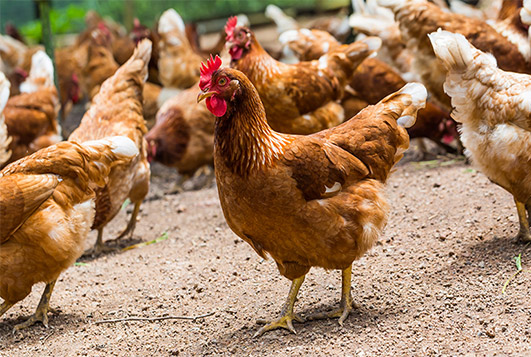
The above five points are the precautions for raising chickens in the chicken cage during the process of raising chickens in poultry equipment for sale in south africa. hope that the above descriptions can be carried out by the farmers. We bring some help.
The advantages of automatic chicken breeding equipment
Chicken-raising equipment is one of the most critical feeding methods in current farms. This method is to breed layer hens in layer cages that are welded with alloy wires. According to the chicken breed and age, the overall plan for different types and specifications of chicken cages , Then it is equipped with large and medium-sized chicken raising equipment such as manure cleaning, feeding, egg picking, natural ventilation and temperature reduction. The key advantages of large and medium-sized chicken raising equipment are: increase the relative density of feeding, save concentrated feed, and reduce the waste of concentrated feed for chickens. For chicken flock disease prevention
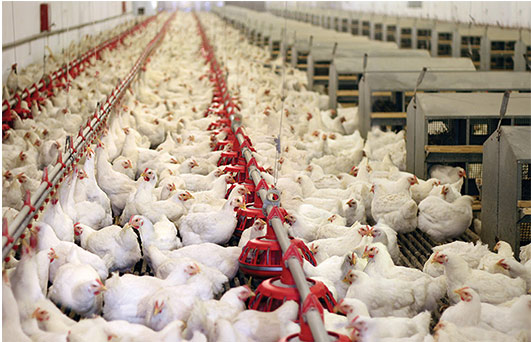
1. Cage:
There are three types: layer chicken cage, broiler cages, and chick cages. Most of today’s farms are caged, and cages are used to feed convenient and save places. Separate cages can reasonably prevent diseases, improve the survival rate of chickens, and also Improved economic benefits.
2. Manure removal system software:
It is widely used in the removal of poultry excrement in cages. It can complete the intelligent management method. It can perform automatic and timing removal of manure. The actual operation is simple and convenient. It is fully automatic and manual to change at will. The use of chain track to remove manure is not only convenient for management There is no need for many workers, and the pig manure is accompanied by the operation of the chain track manure cleaner until the tail end falls into the manure removal belt and is sent to the manure truck to push away, which can improve the natural environment of the livestock house and reduce the occurrence of diseases.
3. Loading system software:
Automatic feeding machine specializes in the feeding of machinery and equipment of layer cages. The automatic feeding machine has a unique structure, novel and easy to use, cost-saving, well-proportioned feeding, and less loss. It is driven by a DC brushless motor, with low noise, The actual operation is convenient, it is convenient, the indoor space is small, and the maintenance is convenient. Therefore, it is very popular among the farms. Choosing a feeder not only saves time, but also liberates human resources. The feeder feeds immediately, safety, convenience, environmental protection and energy saving, no noise, small chicken response, and very convenient.
4. Egg collection machinery and equipment:
The essential machinery and equipment for large and medium-sized layer farms. The key function of the egg collector is to transport the raw eggs from the iron cage to an area to centralize, so that the workers who pick up the eggs do not need to walk around. Local picking is enough, reducing the human capital of egg pickers, but improving labor productivity, and thus achieving the actual effect of reducing costs.
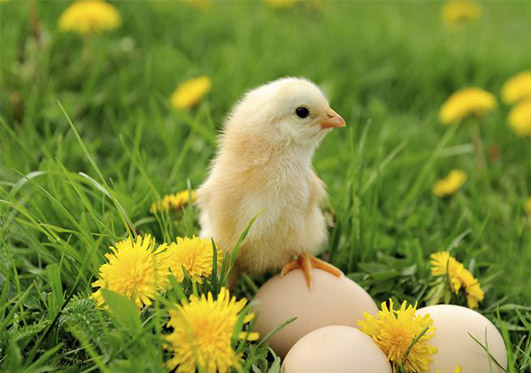
5. Natural environment automatic control system:
The precise control system guarantees to save concentrated feed and reduce the consumption of kinetic energy. The actual operation of the mobile phone software on the page is very easy to manage. One computer terminal can manage multiple chicken sheds, and the comprehensive data information can be transmitted in real time. It can grow and develop in suitable temperature environment and humidity in all seasons, which greatly reduces the rate of chicken death.
6. Natural ventilation cooling system:
The natural ventilation cooling system includes a centrifugal fan wet curtain, and the whole process of cooling of the system software is carried out in its key "cooling water curtain paper". When the outdoor warm air is sucked by the centrifugal fan and enters the cooling water curtain covered with cooling circulating water, the cooling circulating water is converted from liquid to vaporized oxygen molecules, which digests and absorbs a lot of energy in the air and makes the gas temperature drop rapidly. After being mixed with the warm air in the room, it is discharged outside according to the industrial exhaust fan.
Key points of light control technology for laying hens
Light is one of the necessary environmental conditions for laying hens. The intensity, time and color of light are very important for chicken activities, metabolism, growth and productivity, especially for laying hens raised in layer battery cage equipment. Reasonable control of light can improve the production capacity of laying hens and the economic benefits of farmers.

1. The effect of light on laying hens
Light stimulates the hypothalamus directly through the skull or light through the nerve pathway of the nerve lobe. After the hypothalamus is stimulated, it secretes gonadotropin-releasing hormone, which reaches the anterior pituitary through the pituitary portal system, causing follicles The secretion of stimulating hormones and ovulation hormones promote the development of follicles and then ovulation. The developing follicles produce estrogen, which promotes the development and function of the hen’s fallopian tubes. At the same time, estrogen also promotes calcium metabolism to facilitate the formation of eggshells. Ovulation hormones Causes hens to ovulate. In a closed chicken house, no matter how nature changes day and night. The laying of eggs by hens is mostly concentrated in the first 2-7 hours of artificial light.
2. Control of lighting technology
1. Lighting time. The length of lighting time is closely related to the age of sexual maturity of chickens. Too short light time during the rearing period will delay sexual maturity, and too long time will lead to early sexual maturity.
2. Light intensity. Appropriate light intensity is conducive to the normal growth and development of chickens. Excessive light can make chickens irritable and cause severe pecking, prolapse or nervousness. The sudden increase in light intensity during the laying period can significantly increase the rate of cracked eggs, soft-skinned eggs, deformed eggs, and sudden death; low illumination can accelerate the deposition of body fat, but the illumination is too low. It will reduce the chicken's feed intake, reduce drinking water, hinder growth and development, and reduce egg production.
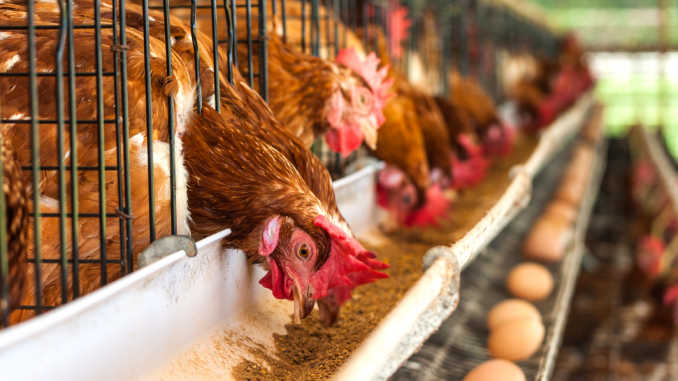
There are four ways to control the light intensity: one is to control the intensity by increasing or decreasing the number of bulbs; the other is to adjust the intensity by changing the bulbs of different power; the third is to control the intensity by adjusting the voltage; the fourth is to control the intensity by adjusting the spacing. But no matter how you adjust, each time you turn on and turn off the lights, you must gradually change from dark to bright, from bright to dark, to give the chickens an adaptation process to prevent frightening the flock. The distance between the bulbs should be 1.5 times the height of the bulb from the ground; the distance between the lamp and the wall should be half the distance between the bulbs, and the lamps between rows should be arranged in a staggered manner to obtain a more uniform lighting effect.
3. Light color. Laying hens are more sensitive to color. Chickens have better vision under red, orange and yellow light. Under red light, it tends to be quiet, with very few pecking habit, a little later in maturity, high feed reward, and egg production slightly increased; yellow light reduces feed reward, delayed sexual maturity, increased egg weight, decreased egg production, and increased pecking ; Green light can make sexual maturity earlier and weight gain faster; blue light can reduce hen egg production.
Main points of feeding and management of using broiler cages to raise chickens
For broiler breeding, most farmers now use broiler cages for breeding. The use of broiler chicken cages to raise chickens is more conducive to the management of the chickens by the farmers, and it is also more conducive to the rapid growth of the chickens. However, if the farmers do not use scientific and reasonable breeding methods to raise chickens, it will be difficult for the chickens to grow well. Today, I will give a detailed account of several key breeding points that farmers should pay attention to when using broiler cages to raise chickens.
1. Group the chickens
When the three-dimensional broiler cages are used to raise chickens, they usually use whole sports chicks. When the density of chicks is too large, group them in a timely manner to ensure that the weight of the chicks is even. The first grouping is usually 12-16 days old. The grouping is too early. It is easy to drill through the gaps in the growing cage, and it will cause a waste of space and energy. The second grouping, at 25-28 days of age, this time grouping should place the heavier healthy parts in the lower layer, leaving the weak young. In summer, because the temperature is too high, grouping can be carried out in advance. In winter, the temperature is cold and the temperature difference between the upper and lower cages is large. You can appropriately delay the time of cage division, and put one more in the lower cage to reduce the temperature difference between the upper and lower cages.
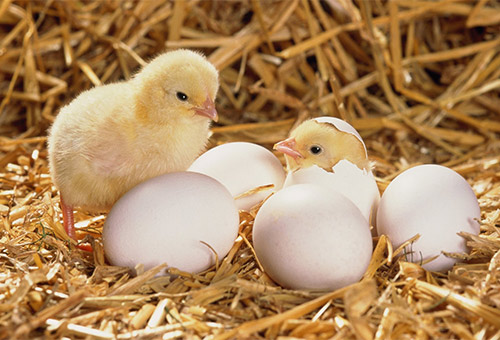
2. Control of temperature
When the temperature outside the chicken house is lower, the temperature difference between each layer is greater. Under normal circumstances, brooding are placed on the highest level, because the highest level has a higher temperature, which is conducive to saving heat. On the first day the chicks enter the farm, the temperature should be controlled at 33-34°C, which can also be adjusted according to the state of the chicks. When the temperature is right, the chickens are evenly distributed, lively, and have a strong appetite. When the temperature becomes low, shrink the neck and bow back and concentrate on the heat source. Squeezing each other, their bodies tremble. When the temperature is too high, water consumption increases, appetite decreases, breathing speeds up, and there is water in neck feathers. In the first week, the temperature dropped to 30°C, and then dropped by 2°C every week thereafter. The use of chicken cages to raise chickens has a high density, which is 1 to 2°C lower than the normal temperature. It is necessary to avoid the phenomenon of heat stress in the flock that causes a decrease in feed intake.
3. Disinfect the chicken house
The chicken house should be thoroughly cleaned and disinfected 5 days before the chicks are put into the house. Here, the farmers need to pay attention to avoid using caustic soda and other corrosive disinfectants for disinfection. After the chicks are in the house, the ground is cleaned every day, and the chickens are disinfected every other day.
4. Drinking water for chickens
After the chicks are placed in the house, it is necessary to ensure that they can drink clean and sanitary water within 2 hours. For the first time the chicks drink water, use warm water at 25°C, add 5% glucose and 0.1% vitamin C to the water, and rinse the drinking fountain frequently. Drinking water should not be interrupted throughout the brooding period. From the second day of brooding, add drugs to prevent pullorum in the drinking water.
The above is the summary to the farmers today, in the process of using broiler feeding cages to raise chickens in Uganda, the main points for the management of chicken flocks. I hope that through today's description, farmers can pay more attention to these points in their future breeding work.
What are the operating procedures and installation methods of layer breeding equipment
The feed tanker of the layer battery cage equipment delivers the feed to the feed storage tower outside the chicken house on time, and then the horizontal feeding device sends the feed in the feed tower to the feeding hopper of each cage rack according to the set time. This is the operation of the automated feeding equipment.

After the last crane hopper is filled with feed, the horizontal feeding device automatically stops feeding. The feeding crane runs backward according to the set time, and when it runs to the end of each row of cages, the crane stops automatically. During operation, the hopper of each layer of the crane corresponds to a trough, which can evenly drop the feed in the trough, and each chicken can freely eat fresh feed.
After the chickens have eaten the feed in the trough, the feeding carriage automatically runs to the front of the cage, and then automatically stops at the head rack position. In the process of operation, the driving truck drops the feed evenly in the trough again, and this process completes a feeding procedure. The number of feedings in a day depends on the craft of each farm. The water supply line of the stacked layer cage equipment is set in the middle of the top of each layer of chicken cages, and each cage is equipped with two nipples for the chickens on the left and right sides to drink. A V-shaped sink is set below to remove the chickens. The water splashed when drinking water catches it and evaporates naturally. In this way, the splashed water will not fall into the chicken manure, making the chicken manure more dry.
At the front end of each water line, a filter, a smart water meter, a medicine dosing device and a pressure reducing regulator are installed. Through the digital information of the smart water meter, it is possible to understand the daily drinking situation of the chickens and the laying hens, and the operation process of the laying hen breeding equipment can also judge the health of the chickens.

Layer cage system equipment can provide a good operating atmosphere for breeding. In the installation process of layer breeding equipment, you need to pay attention to the details. During the operation, especially during installation and wiring, it is forbidden to operate with electricity, keep the operating environment dry, avoid the influence of moisture on the equipment, and keep the space and the drive of the equipment can be ventilated at any time.
